‘It’s hard to resist the streets at night when you’re facing this at home’
Kids being delivered to school in paddywagons with ankle monitors aren’t scared of the school principal. Would you be, if you’d been to juvenile detention three times before your 14th birthday?
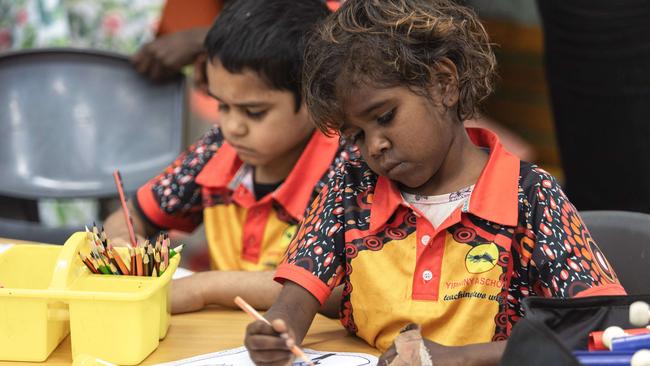
‘Wet paint again, Gavin?” At Yipirinya, an independent school for children from the town camps of Alice Springs, a staff member pops into principal Gavin Morris’s office and shakes her head.
A tradie in high-vis is doing the finishing touches on two doors he has just replaced. It’s the third time in two weeks students have broken into the school office, smashing compupaddter screens, breaking windows and bashing down doors. The sledgehammer they used to gain access is still leaning against the wall behind Morris’s desk.
“It is starting to wear a little thin,” Morris says, pointing out some axe marks in the wall.
More than once, kids have been delivered to school in a paddywagon. Several Yipirinya students are wearing ankle monitors, having been released recently from juvenile detention. Even though the students often target their own school – on more than one occasion they’ve stolen a school bus – Morris’s advocacy for them hasn’t lessened because he knows what they face each day.
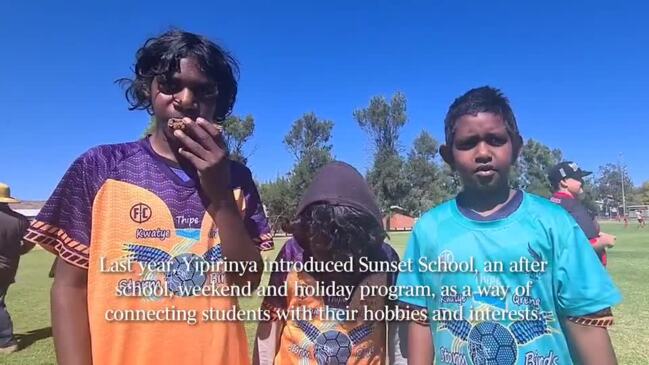
“(These students live in) absolutely Fourth World poverty conditions,” he says. “If there’s a barrier that you can probably imagine a group of people would have to come up against, these guys are facing it.”
He lists the obstacles: food security, domestic violence, exposure to drugs and alcohol, overcrowded houses, homelessness, trauma.
It’s difficult to resist walking the streets at night when this is what you’re faced with at home, he says. It’s hard to get up and come to school when you haven’t slept.
One Yipirinya student lives in a tent with his mother in the Todd River, Morris says. They’ve been there for more than two years.
“We know these responsible adults are coping with those living conditions by using drugs and alcohol,” he says. “I question anyone to live in those conditions and not use that as a coping mechanism.
“They want their kids to be educated, there’s no question about that. It’s just about how many different barriers they have to overcome to get in.”
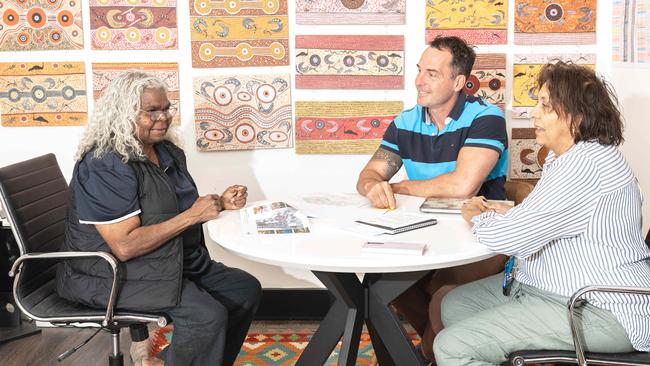
Decades of neglect
Much has been written about a “crime crisis” in Alice Springs, but when you speak to locals it’s worse than it has ever been, a media beat-up or it’s nothing new.
“It’s nowhere near as bad as what’s been reported, and anyway they’re just kids,” one local says. “Why are people afraid of kids?”
In May the Country Liberal Party member for the Northern Territory Legislative Assembly seat of Namatjira and former general manager of the Alice Springs Correctional Centre, Bill Yan, said central Australia had “descended back into anarchy” and was “getting worse and worse every day”.
The most recent NT police crime statistics show, in the six months until June 30, domestic violence and alcohol-related assaults each jumped by 28 per cent compared with the same period last year. Sexual assault was up 23 per cent but car theft fell by 30 per cent.
In January Anthony Albanese flew to Alice Springs to announce a $250m rescue package for central Australia, with money directed towards infrastructure, health and justice investment. More than $40m of that was earmarked to improve school attendance and education outcomes.
At a UN forum this year, independent member for the NT Legislative Assembly seat of Mulka (East Arnhem) and Yolngu man Yingiya Mark Guyula said underfunding of homelands infrastructure was “pushing people into larger towns that are overcrowded and full of problems that stem from disempowerment and poverty”. He said although recent funding commitments were welcome, there were still “decades of neglect and policy damage that must be undone”.
“Across the Northern Territory, we feel the grip of crisis that has unfolded over these decades resulting in communities hurting and overflowing jails.”
Aboriginal and Torres Strait Islander Social Justice Commissioner June Oscar says education is “an empowerment right”.
“Education is the primary vehicle by which economically and socially marginalised adults and children can lift themselves out of poverty,” she says.
But the cycle many NT communities have found themselves in is brutal and unrelenting: many agree the solution is education, but poverty, violence and substance abuse lead to children not attending school, creating a cycle that reinforces the problem.
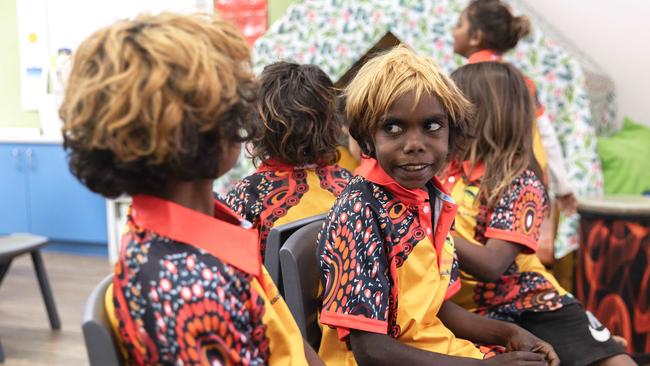
Diagnosed in jail
Issues such as health, housing, food security and safety are so tightly interwoven with school attendance that it’s difficult to untangle them.
For example, a large portion of the young population in Alice Springs is likely affected by fetal alcohol spectrum disorder, attention deficit/hyperactivity disorder and a range of other intellectual disabilities, but Morris says the waiting list for assessment is at least 18 months.
FASD results from alcohol consumption during pregnancy and presents as a range of physical, cognitive, behavioural and neurodevelopmental differences. The prevalence of FASD in Australia is unknown but studies have found higher rates among Indigenous Australians than non-Indigenous Australians.
“We think (at Yipirinya) we’ve got somewhere between 60 and 70 per cent of our kids have FASD,” Morris says. “In addition to that, ADHD, intellectual disabilities or kids on the autistic spectrum, we’re dying to get our kids assessed so they can get diagnosed, so they get the help that they need.”
In the time it takes to be assessed, a child may have “a dozen contacts with police”.
“Once they’ve gone to court one too many times or they’ve broken bail one too many times and they get thrown into Owen Springs (juvenile detention centre),” Morris says. “On day two inside, they get an assessment. And 100 per cent of them get a diagnosis.”
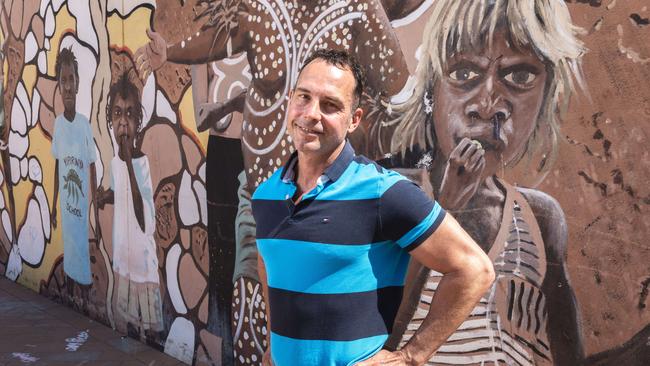
Some locals claim the assessment waiting list is more like three years and the process can take up to 12 months. Even with a diagnosis, often there aren’t enough specialists in Alice Springs to carry out regular treatment.
With so many students in need, Yipirinya recently flew in its own team of medical specialists. Morris says in five days they assessed 18 students, 12 of whom were given a diagnosis. Nine of those 12 students qualified for a lifetime National Disability Insurance Scheme plan.
As part of the federal government’s central Australia rescue package, $18.4m has been earmarked for identifying children with ADHD, FASD and autism.
But the problem of undiagnosed disorders and other health issues is exacerbated if children aren’t attending school, as it is often teachers who identify those in need.
Parents and teachers also have concerns about a shortage of school counselling services.
A NT Department of Education spokesperson says there are 83 wellbeing and inclusion employees supporting all 154 government schools in the Territory, located in six regional centres. Of those positions, 30 are school counsellors. “At any point in time, the department has a student wellbeing and inclusion duty worker available to principals for consultation where required,” a spokesperson says.
However, the Australian Psychological Society recommends at least one full-time equivalent school psychologist for every 500 students. The NT has one counsellor per 1123 students. In comparison, NSW reports having one counsellor per 666 students and Western Australia has one for every 548 students. There are five school counsellor positions to cover 36 schools in the Territory’s central region.
“We have two full-time counsellors at Yipirinya and it’s still not enough given our community context,” Morris says. Yipirinya has about 300 students.
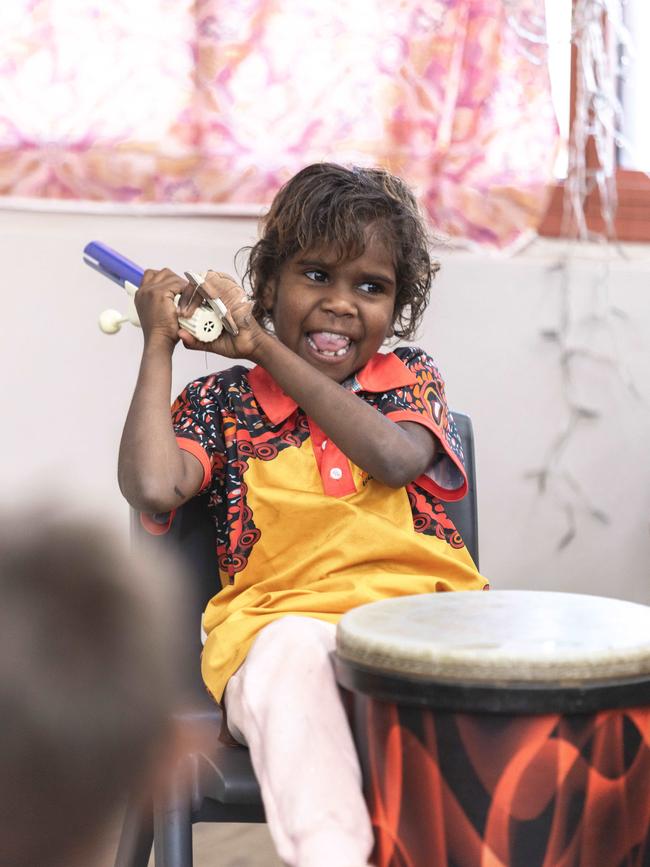
Teachers say students as young as six are attempting suicide. According to the Australian Institute of Health and Welfare, the suicide rate in Aboriginal and Torres Strait Islander people is twice that of the non-Indigenous population, and trauma is common in Indigenous Australians.
The interruptions to schooling are continuous – health is another factor. With many health issues disproportionately affecting Indigenous Australians, students often miss school to attend funerals and associated sorry business, for their own health needs or to care for a family member.
Rates of homelessness in the NT are 12 times the national average and more than half of Indigenous Territorians live in overcrowded homes. At Mapuru, in northeast Arnhem Land, the population grew but no new houses were built for more than 20 years.
Former teacher John Greatorex says as children grow up, marry and become parents, “the only accommodation available is in rooms with their siblings or parents”. During the last census, one household recorded 45 people living there.
In many remote communities there are no rental properties and private home ownership isn’t an option. The only housing is public. The waiting time for public housing in Katherine, Nhulunbuy and Alice Springs is six to eight years. In Tennant Creek it’s between eight and 10 years.
Yipirinya co-assistant principal Bess Price says housing affects sleeping patterns and she can tell the moment she sees a child who has been up all night.
“Their body language is either a good night’s sleep or a bad night’s sleep,” she says. “In a house in a town camp, it’s not just mum, dad, the kids, it’s everybody, all the relatives stay there. And the house belongs to every kin that you have staying there, that means they have access to everything that you have. You’re trying to find something to eat when everybody else has finished all the food in the fridge that your mum has bought for you.”
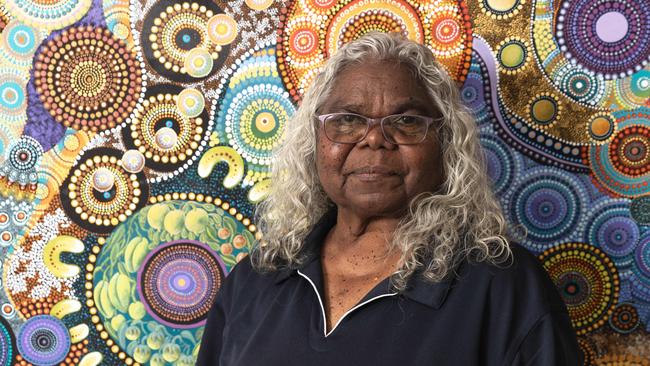
Schools increasingly are involved in trying to address the disadvantages faced by their students. Food security affects attendance, and many schools provide breakfast and lunch programs.
Rob Roughley, deputy principal at Nyangatjatjara College, a secondary school at Yulara, near Uluru, says Indigenous people living remotely have to pre-pay for electricity and their power is cut off when they’ve used up their credit.
“We’re looking at issues like does the family have access to a fridge? If they don’t, they have to wait until the shop opens to buy stuff for breakfast, which might stop a kid from coming to school,” he says. “In cities, people take for granted that they flick a switch and the light comes on. Here, if one person accidentally leaves the light on for half a day, the power runs out.”
Break the cycle
Back at Yipirinya School, Morris isn’t happy. Students shuffle into the school auditorium and sit cross-legged on the indoor basketball court in front of him.
“We’ve had some of our own Aboriginal families and children break into our school,” Morris says, his voice cracking as he addresses them. “It makes me very sad.”
He introduces three board members seated beside him – “the big bosses” – and has the kids yell good morning to each of them.
“Good morning, Sarah! Good morning Froggy! Good morning Moonlight!” they shout.
In a mix of the school’s five languages – English, Western Aranda, Central Arrernte, Warlpiri and Luritja – the board members tell the children why they started the school, why education is important, why the school needs to be a safe place they can all come to every day. The kids listen and nod.
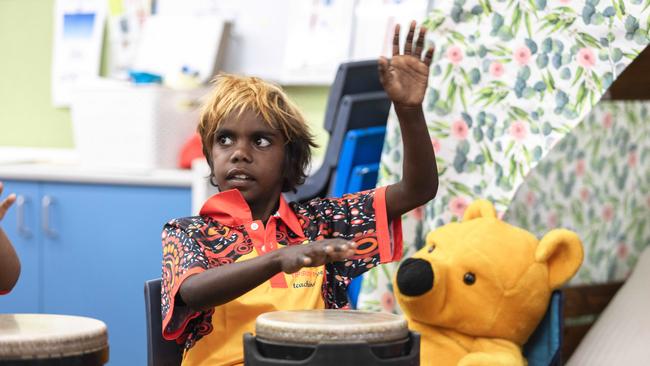
After assembly, co-assistant principal Price pulls up a chair under a tree overlooking the school’s new 3x3 basketball court. Behind her is the school pool. Both facilities were efforts to encourage children to attend and the pool works particularly well over summer, when temperatures reach up to 40C.
Price, former CLP member for Stuart and the mother of senator Jacinta Nampijinpa Price, says education has the power to unite this fractured community.
“We need more Aboriginal people involved in students’ education,” she says. “When I was going to school in Yuendumu (290km northwest of Alice Springs), my parents worked at the school. My dad was a janitor, my mum cleaned the school classrooms, and they were there every day when I was. School councils met. The whole community was involved.”
Price says the housing situation in Alice Springs is dire and Yipirinya’s plan to build a boarding house on campus could help to relieve that and, in turn, boost attendance.
“It would mean that we would give our students somewhere safe to stay, but with their own relatives with them,” she says.
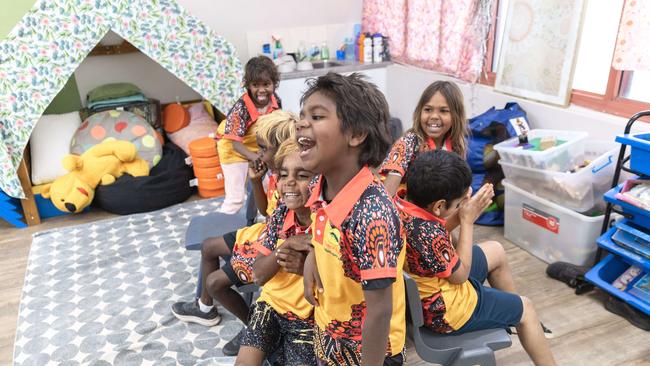
The proposed boarding house made headlines recently with federal member for Lingiari Marion Scrymgour withdrawing her support for the $12m facility and accusing Morris of bullying.
Morris says the boarding plans will go ahead regardless. Like Price, he sees it as a way to break the cycle of disadvantage in Alice Springs.
“I’m not a greenie-frangipani-thrower,” he says. “But putting 10, 12, 14, 16-year-old kids in jail does nothing for that child apart from set them on a really steady slope for constant revisits to juvenile detention and beyond.
“It’s not somewhere you want your 12-year-old. They come out desensitised, almost like zombies. And the other thing it does is it kind of lessens the impact for any other punitive measure you can possibly imagine. After you’ve just been in juvenile detention for the third time when you’re 14, what possible punitive measure could you have in school that’s going to compare to that? I mean you’ve just been removed from home, (incarcerated) for weeks or months, and then you come out, and then you only go to the principal’s office, and there’s going to be something in there that’s going to frighten you?”
Morris and Price are two voices among many calling on the government to reconsider its priorities and put education before incarceration.
Former Territory Labor politician Scott McConnell, who grew up in central Australia attending remote schools, says you can tell a lot about what a community values by where it spends its money.
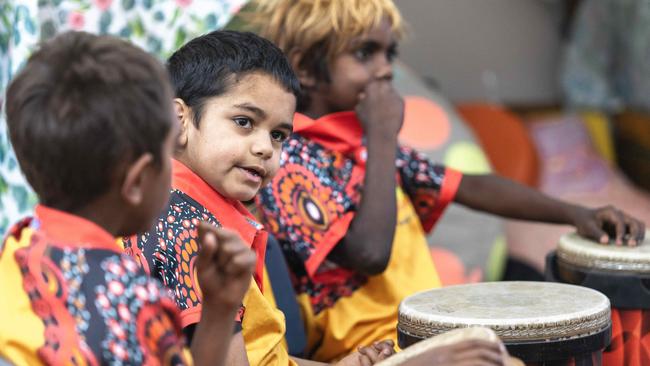
“The No.1 priority of the Northern Territory government in remote communities should be school,” he says. McConnell is disappointed in the Labor government approach to education and says both sides of politics have let down NT children. He says underinvestment in education effectively is sentencing the whole community to a range of social and economic fallout.
“When we’re driving out to community, the first thing that we should see is the school,” he says. “The school should have the best gardens, the best fencing, the best-painted walls, the best murals, the best flagpoles. Most of the functioning of the community should be focused around the school. The school grounds should be the best community meeting space – it’s got grass, it’s got trees, it’s got nice shade areas, it’s got barbecues ready to go, it’s got lighting.
“The light on the hill, when we go into the community, should not be the police station.
“It’s not like Wadeye (420km southwest of Darwin), where the biggest piece of infrastructure, which costs more than $30m, is the police station, or Yuendumu, where the biggest, brightest building is the police station.
“It should be the school.”
Kylie Stevenson and Tilda Colling are independent journalists working in the Northern Territory and Queensland. This project was supported by the Meta Public Interest Journalism Fund.

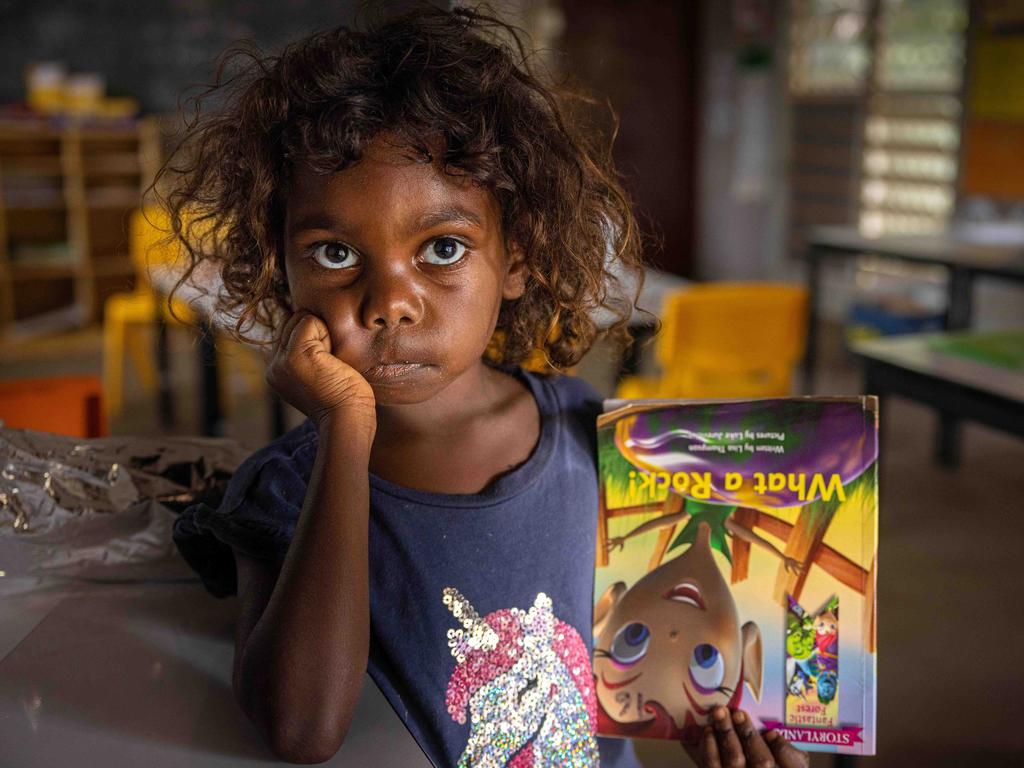
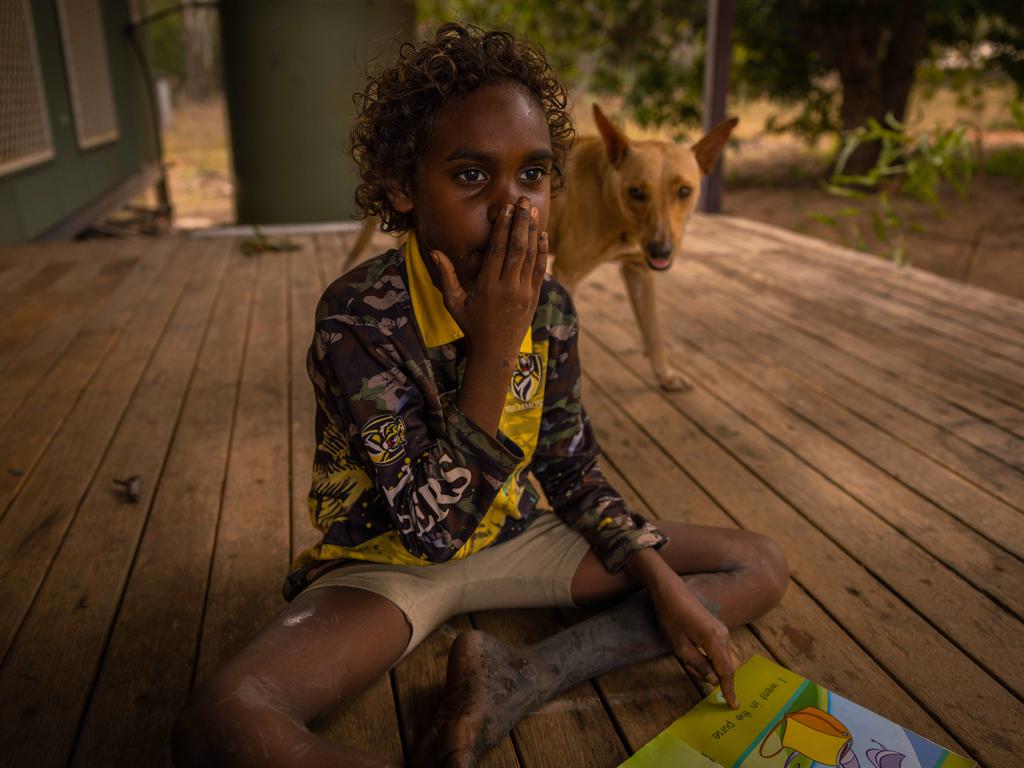
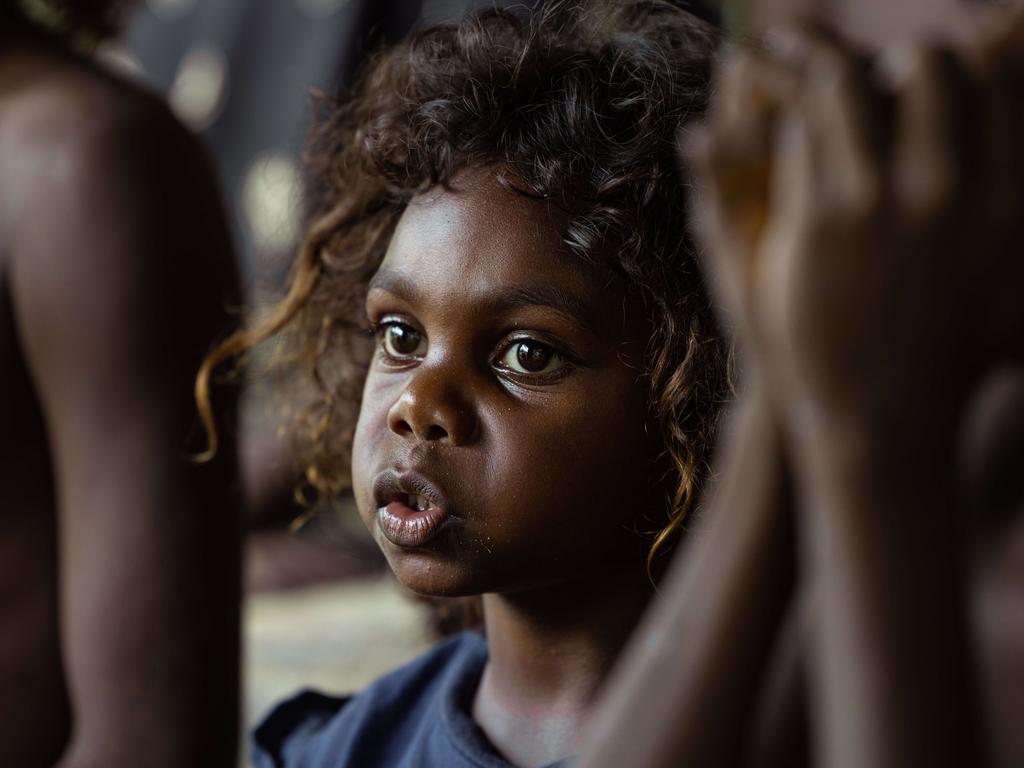
To join the conversation, please log in. Don't have an account? Register
Join the conversation, you are commenting as Logout